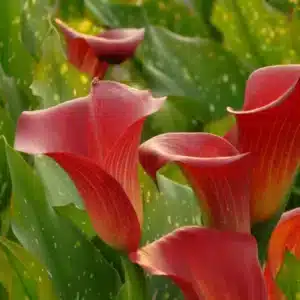Celebrate winter
DIY and how-to

The long winter months are often associated with bleak, bare and colourless spaces in the garden but this need not be the case! The solution is to fill the gaps with winter-flowering bedding plants. Plant them during the autumn months of April and May to guarantee glorious colour from winter into spring. These ready-to-plant seedlings are available in trays of varying quantities at your local garden centre now.
There are bedding plants that are suitable for both sunny and shady positions. Sun lovers include alyssum, calendula, dianthus, gazania, godetia, Iceland poppies, lobelia, nemesia, petunias, pansies and violas. In partially shaded areas plant bellis, delphinium, foxgloves, forget-me-nots, larkspur, primulas and schizanthus.
When choosing plants, find out the height they reach at maturity. Create a layered effect in the border by planting the taller varieties like foxgloves (digitalis) at the back. Medium height plants such as poppies work well when planted in the middle. While low growing annuals like pansies, fairy primula and lobelia look stunning as edging plants at the front of the border.
Bedding plants often have more aesthetic appeal when mass planted. An exception is planting low growing pansies and tall poppies together – this combination makes for a superb display. Another option is to plant spring-flowering bulbs in-between seedlings. Most bedding plants can be grown in containers and these can be used to add pizzazz to your patio or entrance during the winter months.
For success with seedlings carry out the following steps :
- Prepare the soil – Add lots of compost to the soil in the area where you want to plant the bedding plants. To improve the texture of sandy soil, add 2 bags of compost and one handful of planting fertiliser over every square metre, and dig them in to the soil. Remove any debris, grass, weeds and stones, and then level the bed with a rake.
- Transplant the seedlings – Water both the seedlings and the soil thoroughly. Remove each seedling by pushing the bottom of the tray to get them out. In this way you avoid damaging the roots. Place the seedling in a hole in the prepared bed and plant it at the same depth as it was in the tray. After they have all been planted, water well using a fine sprinkler.
- Water requirements – Newly planted seedlings need daily watering until they are established. Once they are settled in, they can be watered deeply but less often. This method of watering encourages deep root growth and is more beneficial for healthy plants than regular light sprinklings. Alyssum, dianthus, gazanias and petunias in particular need soil that drains well and don’t like wet roots.
- Fertilise – To promote healthy growth and prolific flowering, bedding plants require fertilising every two weeks. Foliar fertilising is best if the bedding plants are in competition with the roots of shrubs and trees for nutrition. This means that instead of applying fertiliser to the soil around the plants, fertiliser is sprayed onto the foliage of plants.
- Sow seeds – For a quick and easy alternative for mass colour in full sun why not sow some seed? Seeds to sow now include alyssum, linaria, African daisy, Livingstone daisy, sweet pea and Virginian stock.
You might also like
Shop online
-
- Sale!
ZANTEDESCHIA RED SOX BULBS
- Original price was: R89.99.R62.99Current price is: R62.99.
- Add to cart Learn More
-
HANDWOVEN OATIES BASKET
- R44.99 – R64.99
- Select options This product has multiple variants. The options may be chosen on the product page Learn More




